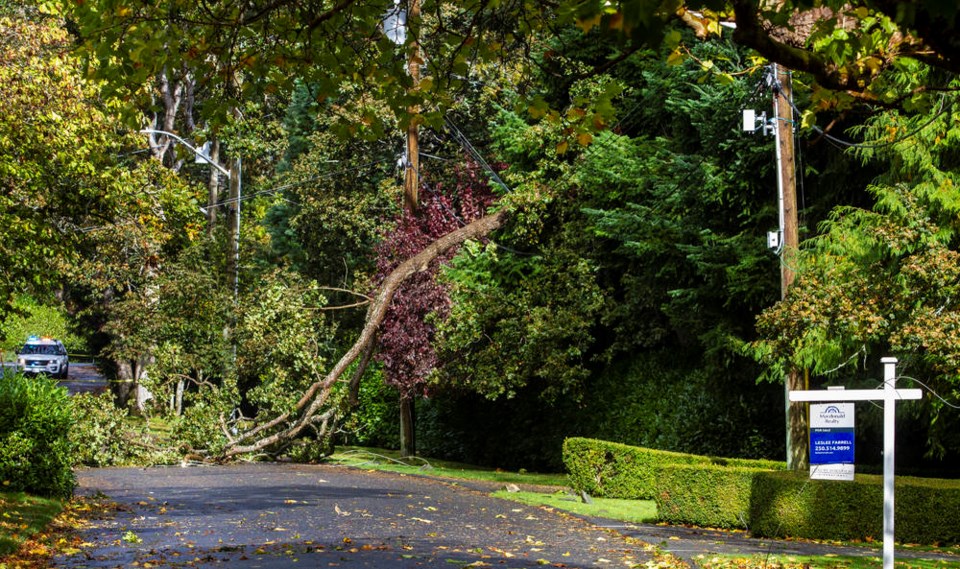Power outages on Vancouver Island reached 54,000 by late afternoon following stormy conditions that had B.C. Hydro working hard to keep up.
It was the first “major event” of the 2020 storm season, said B.C. Hydro spokesman Ted Olynyk.
That means some already-weakened trees are sure to have toppled, he said.
“Trees that have been ready to fail since from the last storm event were put under a lot of stress because of the very dry summer.”
He said B.C. Hydro’s online map of outages marks them in red “and with this event it’s like the whole Island is painted red.”
Nanaimo and Gabriola Island were hit hard, Olynyk said, while reports indicate the biggest impact was in Parksville-Qualicum and the Comox Valley.
Greater Victoria had its share of storm-related incidents, Olynyk said. “Victoria got a really good blast around 11 o’clock.”
At that stage, the number of local outages climbed to 16,000 customers, he said.
Downed power lines were affecting travel in some areas, including on Blenkinsop Road in Saanich between McKenzie Avenue and Cedar Hill Cross Road.
Oak Bay police said in an afternoon update that Terrace Road at Cadboro Bay Road and Cedar Hill Cross Road was closed while B.C. Hydro repaired a line.
Victoria police officers were directing traffic at several intersections after the power to traffic lights went out.
There were also reports of downed trees around Central Park, including at least one that struck a house.
Drive B.C. was warning drivers of heavy rain and crosswinds in some areas of the Island, and there were at least two rock slides reported.
A slide one kilometre north of Langford to Goldstream Provincial Park affected southbound traffic on the Trans-Canada Highway. Another rock slide three kilometres north of Finlayson Arm Road was cleared by 10 a.m.
In Port Hardy, closures were in effect in both directions due to debris on Coal Harbour Road through late morning.
Wind warnings were in place for much of the day, but had been lifted for most parts of the Island by 4:30 p.m.
B.C. Ferries cancelled several sailings due to the winds, which were expected to ease Tuesday evening as the low pressure system continued to move into the Interior, Environment Canada said.
Olynyk urged people to be prepared for future storms.
“We know with climate change these storm events are going to be more frequent and more intense.”



